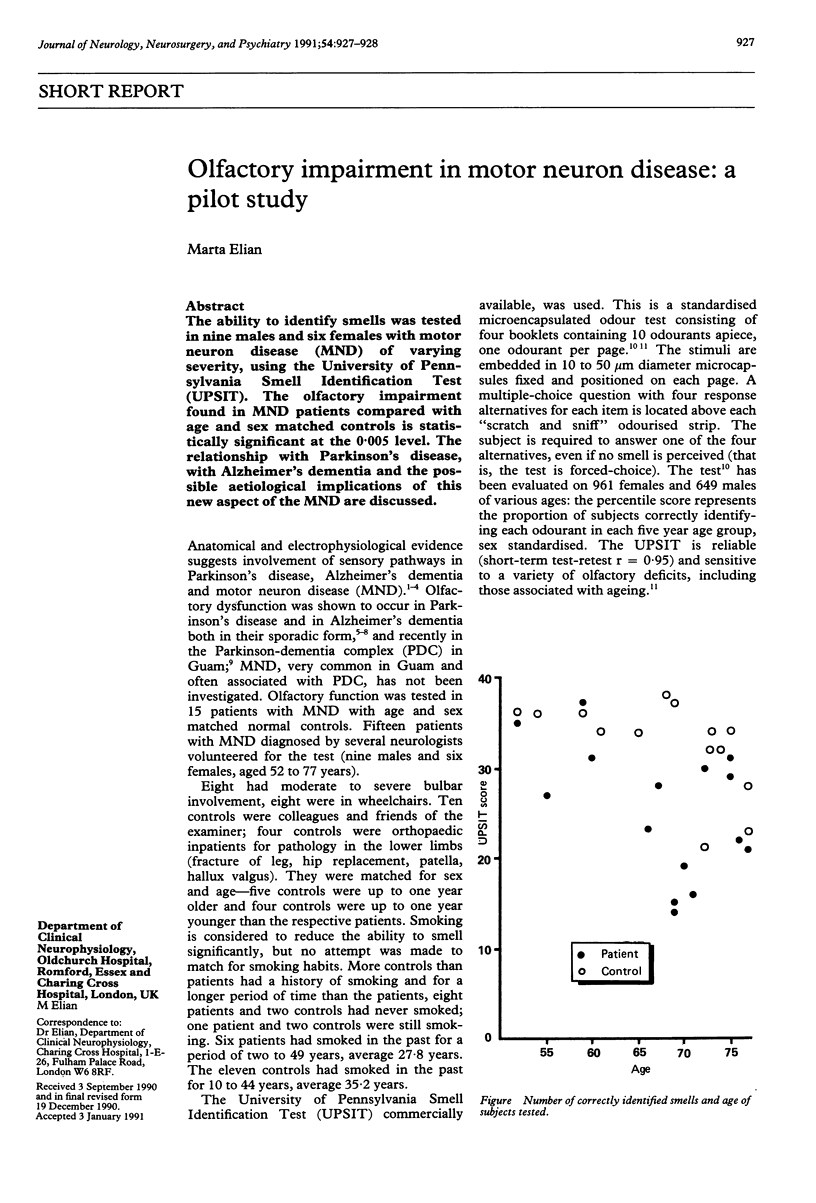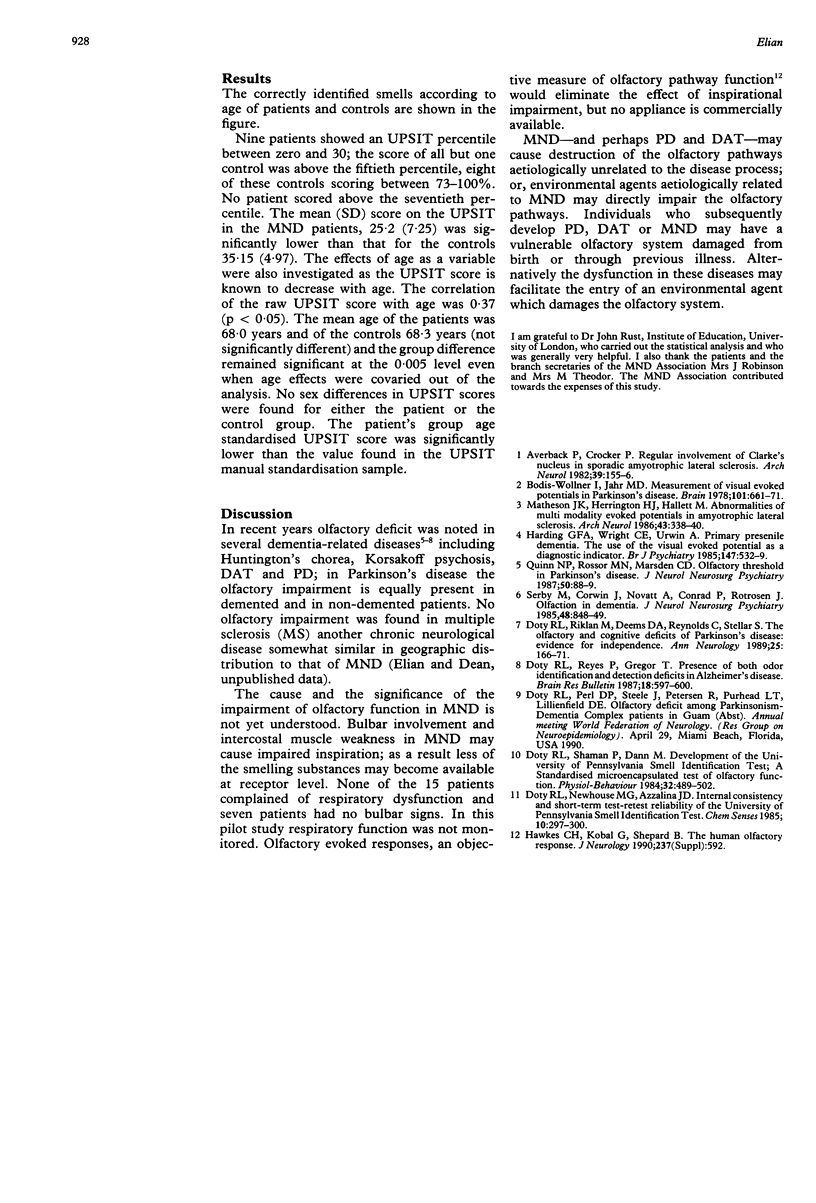Abstract
The ability to identify smells was tested in nine males and six females with motor neuron disease (MND) of varying severity, using the University of Pennsylvania Smell Identification Test (UPSIT). The olfactory impairment found in MND patients compared with age and sex matched controls is statistically significant at the 0.005 level. The relationship with Parkinson's disease, with Alzheimer's dementia and the possible aetiological implications of this new aspect of the MND are discussed.
Full text
PDF

Selected References
These references are in PubMed. This may not be the complete list of references from this article.
- Averback P., Crocker P. Regular involvement of Clarke's nucleus in sporadic amyotrophic lateral sclerosis. Arch Neurol. 1982 Mar;39(3):155–156. doi: 10.1001/archneur.1982.00510150025006. [DOI] [PubMed] [Google Scholar]
- Bodis-Wollner I., Yahr M. D. Measurements of visual evoked potentials in Parkinson's disease. Brain. 1978 Dec;101(4):661–671. doi: 10.1093/brain/101.4.661. [DOI] [PubMed] [Google Scholar]
- Doty R. L., Reyes P. F., Gregor T. Presence of both odor identification and detection deficits in Alzheimer's disease. Brain Res Bull. 1987 May;18(5):597–600. doi: 10.1016/0361-9230(87)90129-8. [DOI] [PubMed] [Google Scholar]
- Doty R. L., Riklan M., Deems D. A., Reynolds C., Stellar S. The olfactory and cognitive deficits of Parkinson's disease: evidence for independence. Ann Neurol. 1989 Feb;25(2):166–171. doi: 10.1002/ana.410250210. [DOI] [PubMed] [Google Scholar]
- Doty R. L., Shaman P., Dann M. Development of the University of Pennsylvania Smell Identification Test: a standardized microencapsulated test of olfactory function. Physiol Behav. 1984 Mar;32(3):489–502. doi: 10.1016/0031-9384(84)90269-5. [DOI] [PubMed] [Google Scholar]
- Harding G. F., Wright C. E., Orwin A. Primary presenile dementia: the use of the visual evoked potential as a diagnostic indicator. Br J Psychiatry. 1985 Nov;147:532–539. doi: 10.1192/bjp.147.5.532. [DOI] [PubMed] [Google Scholar]
- Matheson J. K., Harrington H. J., Hallett M. Abnormalities of multimodality evoked potentials in amyotrophic lateral sclerosis. Arch Neurol. 1986 Apr;43(4):338–340. doi: 10.1001/archneur.1986.00520040026013. [DOI] [PubMed] [Google Scholar]
- Quinn N. P., Rossor M. N., Marsden C. D. Olfactory threshold in Parkinson's disease. J Neurol Neurosurg Psychiatry. 1987 Jan;50(1):88–89. doi: 10.1136/jnnp.50.1.88. [DOI] [PMC free article] [PubMed] [Google Scholar]
- Serby M., Corwin J., Novatt A., Conrad P., Rotrosen J. Olfaction in dementia. J Neurol Neurosurg Psychiatry. 1985 Aug;48(8):848–849. doi: 10.1136/jnnp.48.8.848-c. [DOI] [PMC free article] [PubMed] [Google Scholar]


